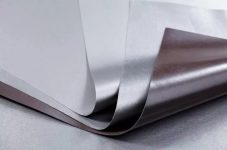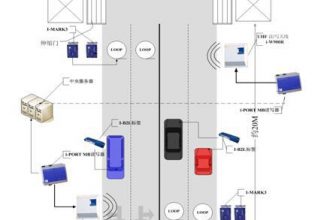
Application of absorbing materials
[ad_1]
With the development of modern science and technology, the impact of electromagnetic wave radiation on the environment is increasing. At the airport, the flight is delayed due to electromagnetic interference; mobile phones often interfere with the normal operation of various electronic diagnosis and treatment equipment. Therefore, the treatment of electromagnetic pollution and the search for a material that can withstand and weaken electromagnetic wave radiation-absorbing materials have become a major issue in materials science.
The so-called absorbing material refers to a type of material that can absorb the electromagnetic wave energy projected on its surface. In engineering applications, in addition to requiring a high absorption rate of electromagnetic waves in a wide frequency band, the absorbing material is also required to have the properties of light weight, temperature resistance, humidity resistance, and corrosion resistance.

Electromagnetic radiation causes direct and indirect damage to the human body through thermal, non-thermal, and cumulative effects. Studies have confirmed that the performance of ferrite absorbing materials is the best. It has the characteristics of high absorption frequency band, high absorption rate, and thin matching thickness. Applying this material to electronic equipment can absorb leaked electromagnetic radiation and achieve the purpose of eliminating electromagnetic interference. According to the law of electromagnetic waves propagating in the medium from low magnetic to high magnetic permeability, high magnetic permeability ferrite is used to guide electromagnetic waves, through resonance, a large amount of radiant energy of electromagnetic waves is absorbed, and then the energy of electromagnetic waves is converted into heat energy through coupling.
In the increasingly important stealth and electromagnetic compatibility (EMC) technology, the role and status of electromagnetic wave absorbing materials are very prominent, and they have become the magic weapon and “secret weapon” of electronic countermeasures in modern military. Its applications are mainly in the following aspects.
Stealth technology
Coating absorbing materials on various weapons and military facilities such as aircraft, missiles, tanks, ships, warehouses, etc. can absorb reconnaissance radio waves and attenuate reflected signals, thereby breaking through enemy radar defense zones. This is a type of anti-radar reconnaissance. A powerful means to reduce the weapon system from being attacked by infrared guided missiles and laser weapons. For example, because the American B-1 strategic bomber is coated with absorbing material, its effective reflection cross section is only 1/50 of that of the B-52 bomber; after coating the absorbing material on the fairing of the 0H-6 and AH-1G Cobra helicopter engines The infrared radiation of the engine can be reduced by about 90%. In the 1990 Gulf War, the first F-117A aircraft that the United States entered Iraqi territory were stealth aircraft coated with absorbent materials. They effectively avoided Iraq’s radar monitoring.

Improve the performance of the whole machine
The false signals generated by the reflection of electromagnetic waves by the aircraft fuselage may lead to false interception or false tracking of highly sensitive airborne radars; when several radars on an aircraft or a ship are working at the same time, the crosstalk between the radar transmitting and receiving antennas is sometimes very serious. , The jammer on board or on the ship will also interfere with the built-in radar or communication equipment. In order to reduce such interference, the excellent magnetic shielding of absorbing materials is commonly used abroad to improve the performance of radar or communication equipment. For example, coating absorbing materials on the fuselage of radar or communication equipment, antennas and all surrounding interferences can make them more sensitive and accurate to find enemy targets; coating absorbing materials on the surrounding walls of the opening of the radar parabolic antenna, It can reduce the side lobe’s interference to the main lobe and increase the distance of the transmitting antenna, and the receiving antenna can reduce the interference of false target reflection; the application of absorbing materials in the satellite communication system will avoid the interference between communication lines and improve The sensitivity of the spaceborne communicator and the ground station, thereby improving the communication quality.
safety protection
Due to the application of high-power radars, communication devices, microwave heating and other equipment, preventing electromagnetic radiation or leakage and protecting the health of operators is a new and complex topic, and absorbing materials can achieve this goal. In addition, current household appliances generally have the problem of electromagnetic radiation, which can be effectively suppressed through the rational use of absorbing materials and their components.
Microwave anechoic chamber
The space formed by the wall surface decorated by the absorber is called a microwave anechoic chamber. An equivalent non-reflective free space (no noise zone) can be formed in a dark room. The electromagnetic waves reflected from the surroundings are much smaller than the direct electromagnetic energy and can be ignored. Microwave anechoic chambers are mainly used for the measurement of characteristic impedance and coupling of radar or communication antennas, missiles, aircrafts, spacecrafts, satellites, etc., the measurement of astronauts’ shoulder antenna patterns, and the installation, testing and adjustment of spacecraft, etc. It can eliminate external clutter interference and improve measurement accuracy and efficiency (indoors can work around the clock), and it can also keep secrets.
RFID/NFC wireless charging magnetic isolation sheet
Absorbing materials are widely used in the fields of RFID/NFC and wireless charging to solve the metal interference problem faced by RFID/NFC, where the interference is attached, which is convenient and environmentally friendly, solves the heating problem of wireless charging, and improves the efficiency of wireless charging.

material type
1. Flexible and thin magnetic load rubber absorbing material: tuned frequency absorbing material
Tuned frequency absorbing materials, or resonance frequency absorbing materials, have the characteristics of great reflection loss at discrete frequencies, usually attenuation up to 20dB. Tuned frequency absorbing materials provide narrow band absorption characteristics from 1 to 40 GHz.
2. Cavity resonance absorbing material
The cavity resonant absorbing material is designed to exhibit high loss characteristics when placed in a microwave cavity. The absorbing material will effectively reduce the Q factor by attenuating the cavity resonance, resonant frequency or harmonics. When the frequency is from 1 to 20 GHz, the cavity resonant absorbing material can absorb the electromagnetic wave energy incident from the normal direction and high angle.
3. Radio frequency absorbing foam material
Surface wave absorbing material
Surface wave absorbing materials are synthetic rubber absorbing materials with the strongest magnetic load. Surface wave absorbing materials are designed to have the highest loss characteristics. This material is used to lay on conductive or metal surfaces and absorb traveling waves or surface waves. Surface wave absorbing materials can absorb traveling wave or surface wave energy from 1 to 20 GHz.
Low frequency absorbing material
Low-frequency absorbing materials have high attenuation characteristics in sub-microwave frequency bands. The material is made into various shapes of magnetic particles, which exhibit high permeability in the frequency range from 1 MHz to 3 GHz.
4. Flexible medium foam absorbing material
Reticulated foam wave absorbing material
The reticulated foam absorbing material is a very light conductive carbon-loaded sheet material, which can achieve a large attenuation of electromagnetic waves incident in the normal and deviated directions. The reticulated foam material is processed by a continuous gradient coating, which has broadband reflection loss characteristics in the frequency range from 1 to 20 GHz.
Damaged foam absorbing material
The destructive foam absorbing material is a lightweight, low-cost carbon-loaded sheet. It is processed with a uniform coating and has high insertion loss characteristics in the frequency range from 1 to 20 GHz.
5. Radio frequency absorbing materials
Curled foam wave absorbing material
The curly foam absorbing material is a lightweight carbon-loaded sheet material with a geometric shape similar to an “egg tray”. The cone structure on the material enables high reflection loss from 1 to 20 GHz.
6. Spraying and infusion of absorbing materials
Wave absorbing grouts, inks and coatings
The absorbing coating material can be used in various application technology manufacturing, such as spraying, injection, or immersion coating. The material can be processed from one or two-part materials of various viscosities.
[ad_2]




